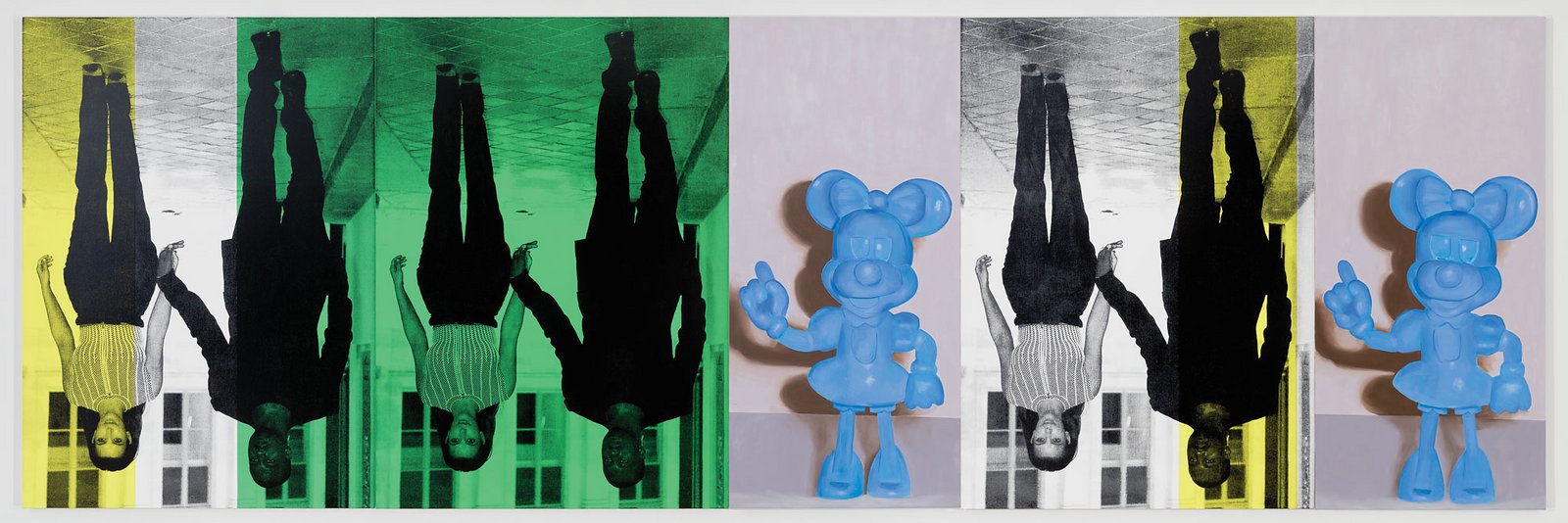At Saatchi Gallery, “Champagne Life” Takes On Art World Chauvinism
- artburo
- 12th January 2016
“Champagne Life,” the new show opening tomorrow at Saatchi Gallery, takes its title from a work by the Brooklyn-based artist Julia Wachtel. Wachtel co-opted an Internet image of Kanye West and Kim Kardashian West, turned it upside down, and set it next to a powder-blue representation of Minnie Mouse. Visually, I see allusions to Andy Warhol and Jeff Koons, but conceptually Wachtel’s main reference is actually to the R&B star Ne-Yo, whose song “Champagne Life” tells of the kind of glitzy lifestyle in which “trouble is” just “a bubble in a champagne glass.”
“Really, she’s making a mockery of the perception that champagne can be an easily obtained aspiration,” says Nigel Hurst, Saatchi’s CEO, by phone. And that notion, he explains, was the ideal theme for the first group show comprised entirely of work by female artists in Saatchi’s 30-year history. “It’s an ironic, hopefully lighthearted title,” he says, “one that throws into contrast the long lonely hours that these women artists have to work in their studios, against the glamour of the art world, with its endless launches and art fairs and parties.”
Unless you’re a rapper, a Kardashian, or simply fabulously wealthy, the bubbly life is likely out of reach. Similarly tough to access: success in the art world as a woman. “Like so many industries, there’s a glass ceiling,” Hurst laments. For example, of the top 50 contemporary art lots sold at auction in 2015, only four of those were by women artists, according to Hurst. (He adds a slightly heartening comparison: Back in 2012 there were zero women in the top 100.)

“Things are getting a little bit better, but they’re getting better too slowly,” says Hurst. So while some women artists secure spots at blue-chip galleries—Saatchi, for example, helped launch stars like Tracey Emin and Cecily Brown—few galleries represent as many women as men. Large-scale museum exhibitions for female artists remain elusive, according to the catalog that accompanies “Champagne Life,” because “almost one-third of solo shows in museums in the U.S. go to artists represented by just five commercial galleries” (so says a report by The Art Newspaper). Given that galleries prefer to take on museum-endorsed artists, this makes for a situation akin to “a snake eating its own tail.”
Most fundamentally, the art world remains punitively unkind to anyone, male or female, who dares to have a life outside of his or her work. “If you take a break from your career for family commitments, I think it’s perceived that you’re less serious about your profession than you should be,” says Hurst. “And we all know nine times out of 10, when it comes to family commitments, whether you’re an artist or a lawyer, it tends to be the woman who makes the career sacrifice.”

